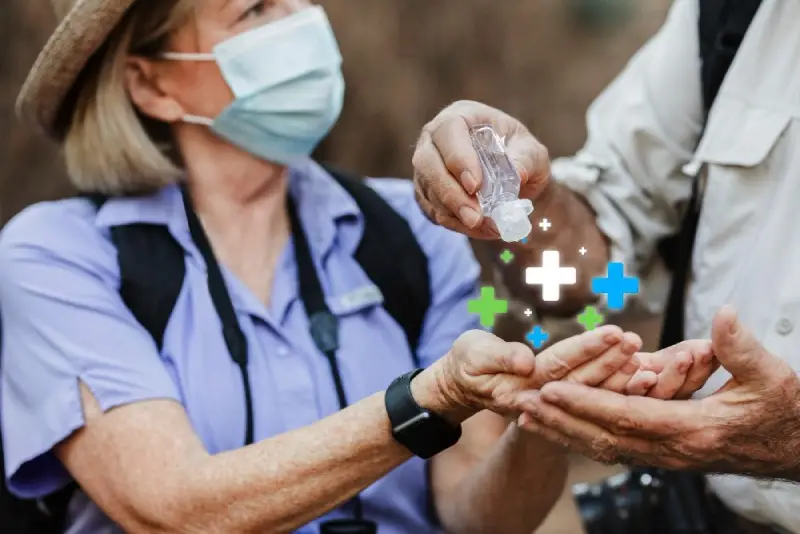- Published on: Nov 30, 2024
- 3 minute read
- By: SecondMedic Expert
World AIDS Day 2024: The Role Of Diagnostic Centers In Combating HIV/AIDS
World AIDS Day, observed annually on December 1st, serves as a critical reminder of the global fight against HIV/AIDS. This year, the theme focuses on collaboration and innovation in the healthcare sector to combat the epidemic effectively. Diagnostic centres play an indispensable role in this fight, driving early detection, routine screening, and stigma-free testing. Let’s explore how diagnostic centers are pivotal in HIV prevention and treatment, emphasizing the importance of HIV testing on World AIDS Day.
Why World AIDS Day Matters
World AIDS Day 2024 marks an opportunity to reflect on progress, advocate for better healthcare policies, and raise awareness about HIV/AIDS. Despite significant advancements, the epidemic persists, with millions unaware of their HIV status. Early detection through diagnostic centres is a cornerstone in tackling this issue, aligning with global efforts to eliminate HIV by 2030.
The Role of Diagnostic Centers in HIV Prevention
Diagnostic centres are at the heart of HIV prevention, offering services that range from early detection to community education. Here's how they contribute:
1. Early HIV Detection and Its Importance
The role of diagnostic centres in HIV early detection cannot be overstated. Identifying HIV in its initial stages:
-
Prevents disease progression: Early treatment helps maintain immune function.
-
Reduces transmission: Individuals aware of their status can take precautions to prevent spreading the virus.
-
Improves health outcomes: Patients diagnosed early are more likely to lead healthy, productive lives.
2. Routine Screening Saves Lives
Routine HIV screening, as offered by diagnostic centres, is vital for at-risk populations. Benefits include:
-
Early intervention through antiretroviral therapy (ART).
-
Reduced stigma by normalizing testing.
-
Empowerment of individuals through knowledge of their health status.
3. Advanced HIV Diagnostic Technologies
Modern diagnostic centres utilize cutting-edge technologies for HIV testing. These advancements include:
-
Rapid testing kits: Deliver results in minutes.
-
PCR (Polymerase Chain Reaction): Detects HIV in the early stages.
-
CD4 count and viral load tests: Monitor disease progression and treatment effectiveness.
These innovations ensure accurate, timely diagnoses, significantly improving patient care.
How Diagnostic Centers Fight HIV/AIDS
Diagnostic centres go beyond testing; they are integral to comprehensive HIV care.
Community Awareness Programs
Promoting awareness about the importance of HIV testing on World AIDS Day is a key initiative. Centers often collaborate with NGOs and public health campaigns to:
-
Educate communities on the benefits of routine HIV screening.
-
Break myths and misconceptions about HIV/AIDS.
-
Promote stigma-free HIV diagnosis on World AIDS Day.
Linking Testing to Treatment
A diagnosis is only the beginning. Diagnostic centres serve as a bridge to medical treatment by:
-
Providing access to ART programs.
-
Offering counselling services for newly diagnosed individuals.
-
Partnering with healthcare providers for continuous care.
Stigma-Free Testing
A major barrier to HIV testing is the fear of judgment. Diagnostic centres actively work to create safe, confidential environments, ensuring:
-
Patients feel comfortable seeking services.
-
Testing has become a routine aspect of healthcare.
Community Role in HIV/AIDS Awareness
The fight against HIV/AIDS requires collective effort. Communities play a critical role by:
-
Supporting Testing Drives: Participating in initiatives organized by diagnostic centres.
-
Promoting Education: Encouraging discussions about HIV to reduce stigma.
-
Advocating for Change: Demanding accessible healthcare services for all.
By collaborating with diagnostic centres, communities can amplify the message of World AIDS Day 2024.
Benefits of Routine HIV Screening
Diagnostic centres emphasize routine HIV screening for everyone, especially high-risk groups. Here’s why:
-
Improved Public Health: Early detection limits the virus's spread.
-
Cost-Effective Care: Preventive measures and early treatment reduce long-term healthcare costs.
-
Psychological Well-Being: Knowing one’s status brings clarity and peace of mind.
Promoting Second Medic’s Stigma-Free HIV Diagnosis
At Second Medic Health Hub Diagnostic Center, we are committed to providing high-quality, confidential HIV testing and screening services. This World AIDS Day, we invite you to:
-
Take advantage of our advanced diagnostic technologies.
-
Join our community outreach programs to spread awareness.
-
Commit to routine screenings as part of your healthcare plan.
Our mission is to ensure that everyone has access to accurate, stigma-free healthcare. Together, we can make a difference.
Conclusion
World AIDS Day 2024 reminds us of the power of collective action. Diagnostic centres, such as Second Medic, are essential in the battle against HIV/AIDS, offering testing, education, and support to affected communities. By embracing routine screenings and promoting early detection, we can envision a future free of HIV. This World AIDS Day, let’s renew our commitment to fighting stigma and providing care to those who need it most.
Take the step today—book your HIV screening with Second Medic and be part of the change.
Read FAQs
A. Early detection of HIV allows for timely medical intervention, such as starting antiretroviral therapy (ART), which can slow disease progression, improve quality of life, and reduce the risk of transmitting the virus to others. Diagnostic centres play a crucial role in providing accurate and accessible testing services.
A. Diagnostic centers support HIV prevention through advanced testing technologies, routine screenings, and educational programs. They also provide stigma-free environments to encourage people to get tested and know their status, particularly on World AIDS Day, a key moment for raising awareness.
A. Routine HIV screening helps identify infections early, improves overall public health by reducing transmission, and empowers individuals to take control of their health. Diagnostic centers, like Second Medic, offer comprehensive screening services with confidentiality and care.









